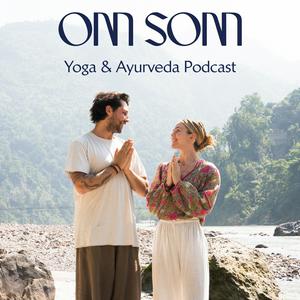Dharana & The Sacred Art of Concentration
PRACTICE WITH US:365 Sadhana Sangha – https://practice.omsom.yoga/365-sadhana-sandha/join100 Hr Asana Sadhana Dharma – https://practice.omsom.yoga/asana-sadhana-dharma-otoBali Retreat – https://omsom.yoga/bali-retreat-2025300 Hr India & Berwick – https://omsom.yoga/300-hour-advanced-hatha-yoga-training-2025200 Hr Berwick – https://omsom.yoga/200-hour-yoga-teacher-training-berwick-2025On this week's episode: DHARANA – THE ART OF INNER STILLNESSIn this episode, we explore Dharana—the sixth limb of yoga—as the art and effort of concentration. Dharana is the capacity to hold the mind on one thing. It precedes meditation (Dhyana) and is essential for entering the deeper, subtler states of yoga.DEFINITION AND ETYMOLOGY OF DHARANAThe word Dharana comes from the Sanskrit root dhṛ, meaning “to hold,” “to bear,” or “to support.” In practice, it refers to the act of fixing the awareness upon one object, sensation, or internal space. Dharana is not yet meditation—it is the threshold, the gathering of the mind from its scattered tendencies toward a single stream of awareness.Unlike meditation as a passive state, Dharana is active, intentional, and often challenging. We speak about the energetic importance of stillness, and how Dharana prepares us to meet the contents of the mind without being swept away by them. It’s the beginning of pratyaya-ekatānata—the continuous, unbroken flow of attention.TEXTUAL SOURCESIn Pātañjalayogaśāstra, Yoga Sutra 3.1 defines Dharana as:“Deśa-bandhaś cittasya dhāraṇā” – “Dharana is the binding of the mind to one place, object or idea.”We also reference Dharana practices in the Hatha Yoga Pradīpikā, where techniques like Trataka (gazing), breath retention, and internal visualisation are offered as means to steady the mind.These teachings suggest that Dharana is not merely a mental exercise, but a deeply embodied and energetic experience that leads into Dhyana and eventually Samadhi.Techniques discussed include breath awareness, chakra visualisation, mantra japa, and Trataka (fixed gaze). These are not about “emptying the mind” but about refining the mind’s ability to rest in a single place—be it the breath, a candle flame, or the heart.We also speak about how Dharana can be integrated into daily life—from brushing your teeth to walking through the bush—as a form of sacred attention.We close with reflections on the obstacles to Dharana—like restlessness, boredom, or frustration—and how to meet them with grace, not resistance.SHARE & CONNECT:Thank you for listening to the Om Som Yoga & Ayurveda Podcast.Please share this episode with someone it might support, and connect with us on social media or via our website.Instagram: @OmSom.yogaWebsite: OmSom.yogaWe operate a yoga studio in Berwick, Victoria, Australia, offering classes, workshops, and Yoga Teacher Training programs. We'd love to connect with you wherever you are on your journey.OM



